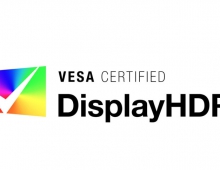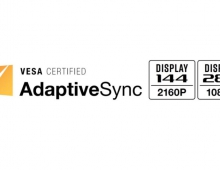
VESA Introduces New Net2Display Standard
The new Net2Display Remoting Standard issued today by the Video Electronics Standards Association (VESA) provides remoting of computer display and I/O capabilities across local interconnects, and across local and wide area computer networks.
Net2Display supports keyboards, pointers, audio and USB-attached peripheral devices, providing local capabilities of a remote PC.
Net2Display has been designed to allow simple client devices and host systems to connect with multiple clients to provide multiple display capabilities. It provides virtual channels for handling various kinds of data traffic with different priorities. Basic IP network facilities prioritize interactive traffic, and discovery mechanisms operate without the need for user intervention. Net2Display describes a set of commands used by a host computer system to send and manipulate display data and I/O. Any display using Net2Display can be connected to a host computer via Ethernet, Wi-Fi, USB, or any other networking or I/O interface. The interconnection between the host computer and the display supports the Internet Protocol (IP) networking protocol; and I/O devices connected to the client display are remotely connected to the host primarily using the USB protocol.
Net2Display minimizes the complexity of the client and supports remoting distances from a meter to thousands of kilometers. It maintains response times below 100 ms, and is designed to use less than 10 Mbps in typical applications. The standard supports plug-ins for various display codecs, which differentiates it from alternative remoting technologies which require fixed proprietary codecs. In addition, USB devices can be remoted without device driver modification. The Net2Display standard also makes optimal use of all existing security protocols and infrastructures.
The new Net2Display standard can be downloaded free of charge from www.vesa.org.
Net2Display has been designed to allow simple client devices and host systems to connect with multiple clients to provide multiple display capabilities. It provides virtual channels for handling various kinds of data traffic with different priorities. Basic IP network facilities prioritize interactive traffic, and discovery mechanisms operate without the need for user intervention. Net2Display describes a set of commands used by a host computer system to send and manipulate display data and I/O. Any display using Net2Display can be connected to a host computer via Ethernet, Wi-Fi, USB, or any other networking or I/O interface. The interconnection between the host computer and the display supports the Internet Protocol (IP) networking protocol; and I/O devices connected to the client display are remotely connected to the host primarily using the USB protocol.
Net2Display minimizes the complexity of the client and supports remoting distances from a meter to thousands of kilometers. It maintains response times below 100 ms, and is designed to use less than 10 Mbps in typical applications. The standard supports plug-ins for various display codecs, which differentiates it from alternative remoting technologies which require fixed proprietary codecs. In addition, USB devices can be remoted without device driver modification. The Net2Display standard also makes optimal use of all existing security protocols and infrastructures.
The new Net2Display standard can be downloaded free of charge from www.vesa.org.





















